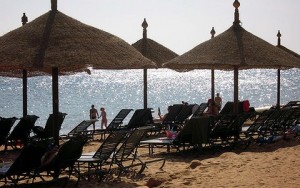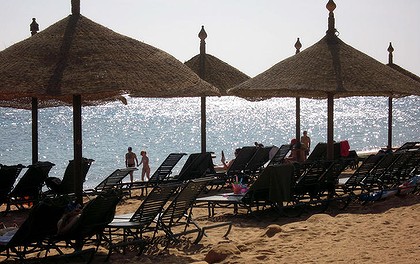
(AFP Photo)
Iranian tourism can make up for the decline in tourism revenues, Minister of Tourism Hisham Zaazou has recently argued.
Zaazou stated that the Iranian tourism market is very promising when it comes to rejuvenating Egyptian tourism, reported state-owned news agency MENA. It is very important to avoid mixing up politics and tourism when it comes to Iran, he said.
The Minister of Tourism stated Egypt is seeking other tourist markets such as India, Morocco, Iraq and Latin America. He added that Iranian tourism could bring in an average of 200,000 tourists per year, earning the state over USD 250m.
Zaazou said Iranian tourists would be mainly interested in the Hurghada and Sharm Al-Sheikh beaches, and would also head for cultural tourism in Luxor and Aswan. He pointed out that the latter destinations have suffered the most from the decline in tourism.
The minister welcomed the formation of a consortium among tourism companies working in the Iranian tourism market in order to set down rules for future collaboration.
Zaazou has found himself repeatedly defending Iranian tourism recently. Over a week ago, the minister gave an interview to satellite channel Al-Balad where he asserted that other Sunni countries have hosted Iranian tourists for years with no issues. Zaazou had previously been attacked by Salafi lawmakers who claim that Iranian tourism poses a threat to Egypt.
Accepting Iranian tourists into Egypt has been a contentious issue among some Islamist factions. Ahmed Nasr Al-Din of the Salafi Al-Nour Party said Shi’as posed a national security threat to the country. The Muslim Brotherhood’s Freedom and Justice Party, meanwhile, has taken a softer stance. Party member Gamal Heshmat called on the matter to be brought to the High Scholars Authority of Al-Azhar, saying that “tourism must take place outside the confines of culture, doctrine, or tradition within Egypt”.
Egypt and Iran agreed on a new tourism exchange agreement back in March that saw the arrival of Iranian tourists to the country in late March for the first time in over 30 years.



